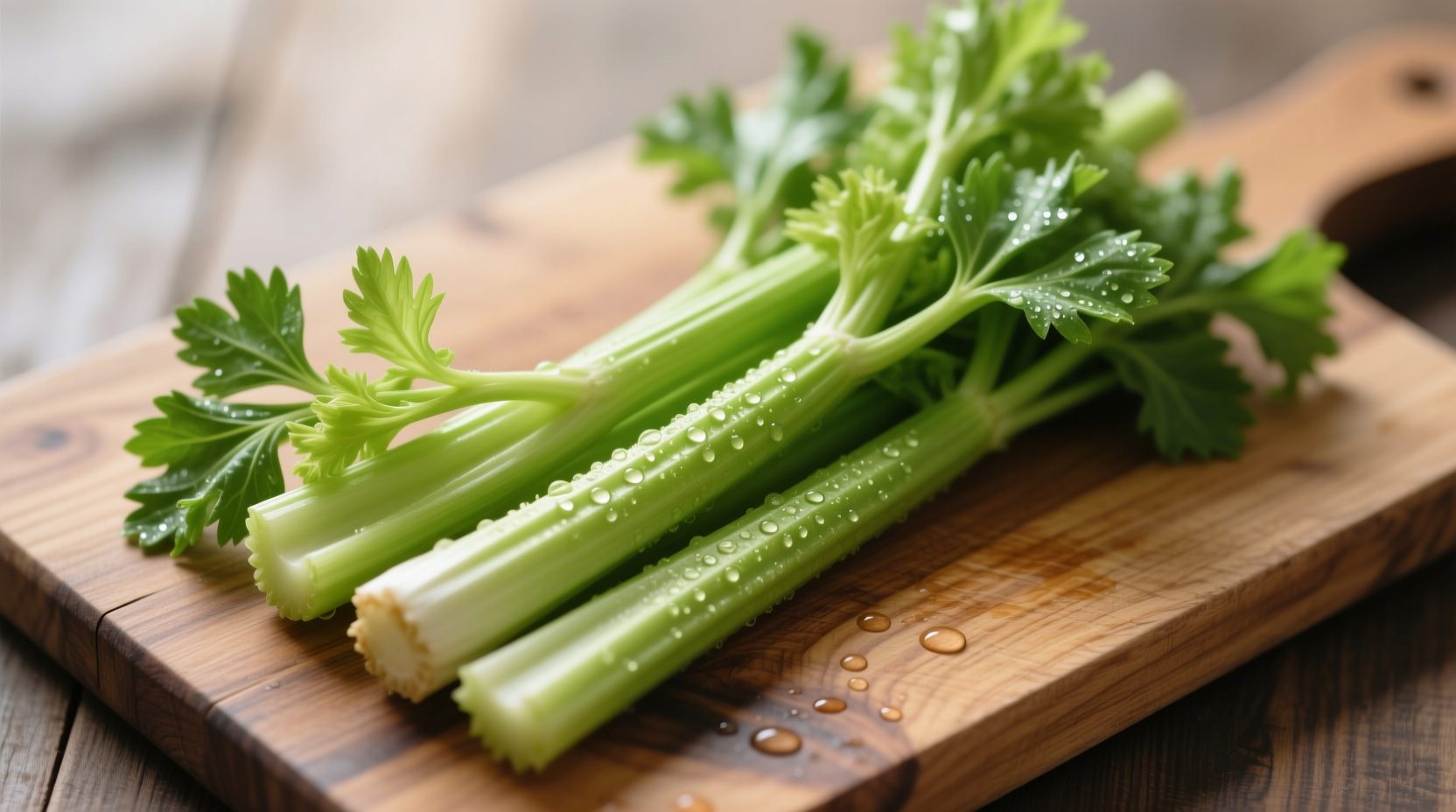When you're tracking your daily calorie intake or looking for weight-friendly snacks, knowing exactly how many calories in celery helps make informed food choices. The straightforward answer: a single medium celery stalk (approximately 40 grams) delivers only 6 calories according to USDA FoodData Central, the gold standard for nutritional information.
Understanding Celery's Calorie Content
Celery's remarkably low calorie count stems from its high water content (95%) and minimal carbohydrate profile. But to use this information effectively, you need to understand serving sizes and how they impact your total intake.
| Celery Serving Size | Calories | Carbohydrates | Fiber |
|---|---|---|---|
| 1 medium stalk (40g) | 6 | 1.2g | 0.6g |
| 1 cup chopped (100g) | 16 | 3g | 1.6g |
| 1 cup diced (110g) | 18 | 3.3g | 1.8g |
| 1 cup sliced (75g) | 12 | 2.3g | 1.2g |
This nutritional breakdown comes directly from the USDA FoodData Central database, the most reliable source for standardized food composition information. Notice how preparation method affects serving weight - chopped celery packs more density than sliced, slightly increasing calories per cup.
Why Celery's Calorie Count Matters for Your Health
Understanding how many calories in celery stalk goes beyond simple number tracking. Celery represents what nutrition scientists call a "negative calorie food" - though this term is somewhat misleading. The concept suggests that your body burns more calories digesting celery than the vegetable provides, though research shows the actual thermic effect is modest.
What makes celery truly valuable is its nutrient density relative to calories. Each stalk delivers:
- Potassium (100mg) for blood pressure regulation
- Vitamin K (30mcg) for bone health
- Antioxidants like apigenin that reduce inflammation
- Phthalides that may help lower cholesterol

Putting Celery Calories in Context
When evaluating celery nutrition facts for weight loss, compare it to other common vegetables:
- Cucumber: 16 calories per cup
- Lettuce: 10 calories per cup
- Zucchini: 20 calories per cup
- Broccoli: 34 calories per cup
Celery sits at the very bottom of the calorie scale, making it ideal for volume eating strategies. Registered dietitians often recommend celery as a base for snacks because you can eat substantial quantities without significant calorie impact. A study published in the CDC's Healthy Eating guidelines notes that high-volume, low-calorie foods like celery help with satiety while managing calorie intake.
Practical Ways to Use Celery's Low-Calorie Profile
Knowing how many calories in celery is just the first step. Here's how to leverage this information:
Smart Snacking Strategies
Replace 100-calorie snack packs with celery paired with healthy dips:
- 2 celery stalks (12 calories) + 1 tbsp almond butter (98 calories) = 110 calories with protein and healthy fats
- 3 celery stalks (18 calories) + 2 tbsp hummus (70 calories) = 88 calories with fiber and plant protein
Cooking Applications
Chefs use celery as a flavor foundation (mirepoix) without adding significant calories. When making soups or stews, you can use generous amounts of celery to build flavor complexity while keeping the dish light. One professional technique: simmer celery leaves along with the stalks to extract maximum flavor without adding extra ingredients.
Addressing Common Misconceptions
Several myths persist about celery's calorie content. Let's clarify:
- Myth: Celery has "negative calories"
- Reality: While celery requires energy to digest, the thermic effect is small (about 5-10% of its calories). The real benefit comes from its high volume and nutrient content relative to calories.
- Myth: All celery varieties have identical calorie counts
- Reality: According to agricultural research from University of Minnesota Extension, Pascal celery (the common grocery store variety) has slightly more calories than leaf celery due to thicker stalks with more fibrous material.
Maximizing Celery's Nutritional Value
To get the most from your celery while maintaining its low-calorie advantage:
- Store properly: Keep in a sealed container with a damp paper towel to maintain crispness and nutrient retention
- Use the leaves: Celery leaves contain higher concentrations of nutrients than stalks
- Eat raw: Cooking slightly increases calorie density as water evaporates, though it makes some nutrients more bioavailable
- Pair with healthy fats: The fat-soluble vitamins in celery absorb better when eaten with avocado, olive oil, or nuts
When Celery Might Not Fit Your Needs
While celery's calories in celery per 100g make it excellent for weight management, it has limitations:
- Low protein content (0.4g per stalk) - not ideal as a primary protein source
- High oxalate content may concern those with kidney stone history
- Requires thorough washing to remove pesticide residues
For those following extremely low-fiber diets (like during certain digestive healing protocols), celery might need temporary limitation despite its low calorie count.
Conclusion: Celery's Role in Balanced Eating
Understanding precisely how many calories in celery helps you make strategic food choices without unnecessary restriction. With just 6 calories per stalk and valuable micronutrients, celery serves as an excellent tool for volume eating, hydration, and adding crunch to meals. When tracking your intake, remember that celery's true value lies not just in what it doesn't contain (calories), but in the nutrients and satisfaction it does provide.











 浙公网安备
33010002000092号
浙公网安备
33010002000092号 浙B2-20120091-4
浙B2-20120091-4